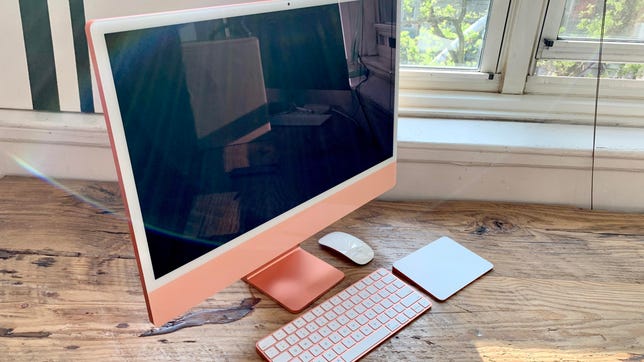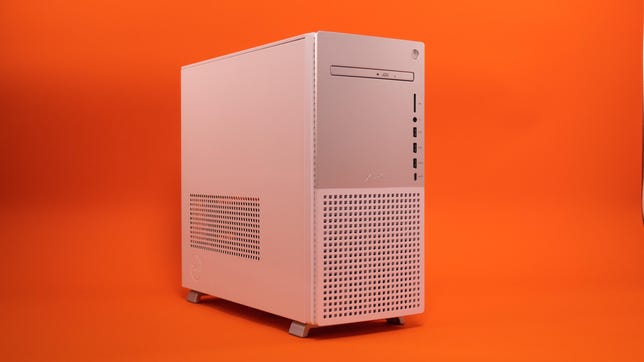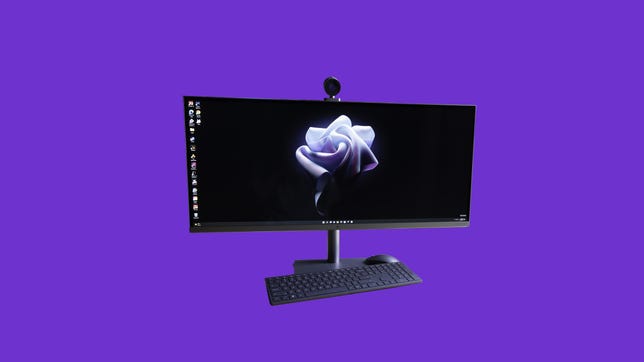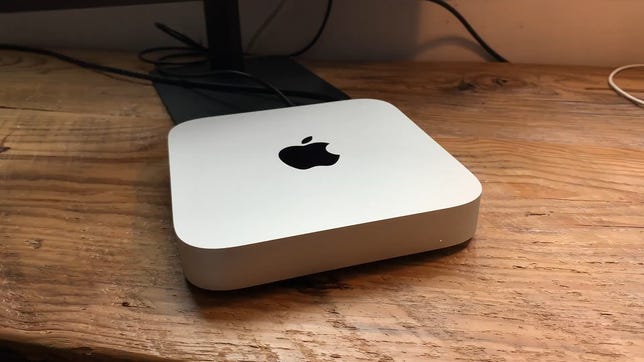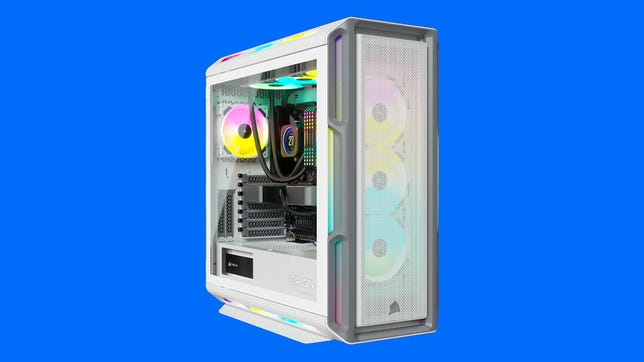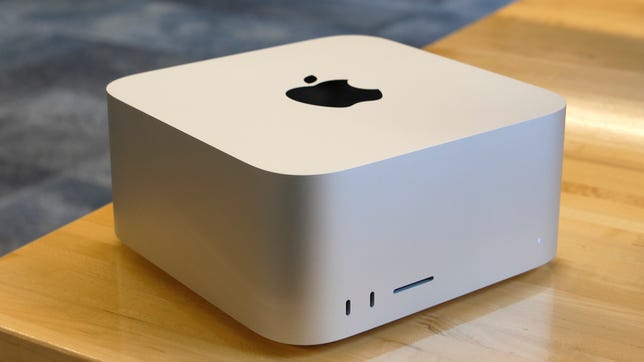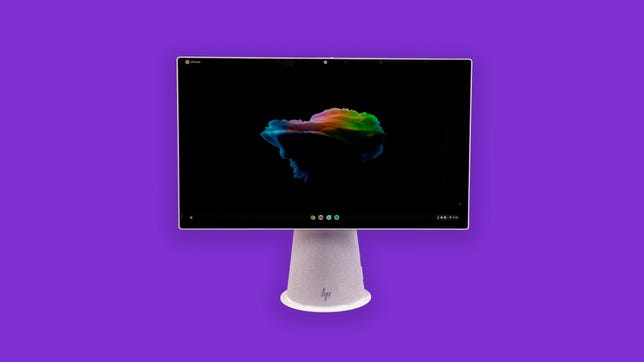
Only one-fifth of computers sold are desktops, these days, but if you look at the available features and storage in the more traditional home and office offerings, you’ll see that the trusty desktop computer has a lot worth considering. There’s much to be said for the portable convenience of laptops and tablets, but if you spend most of your day at a desk, it’s nice to have a more ergonomic setup and a big-screen monitor — or even one of those multiple-monitor arrays.
The best feature of desktop PCs is the durability and longevity they provide. Not only are desktops built more solidly, but not moving around much contributes to far less wear and tear than your conventional laptop will see. And another of the best desktop PC features is that you can get a decent bit more power and expandability than you could from a laptop, along with a powerful processor and a higher quality hard drive or solid-state drive for storage. That processor power and drive potential are particularly crucial if you’re planning to use your personal computer as a gaming PC or a graphics-editing powerhouse.
A desktop computer is generally going to come in the form of either a tower or an all-in-one (with an integrated screen), though there are smaller designs for tighter spaces. And while you can find Windows and Macs for as little as $500 to $700, Chrome and Linux fans have plenty of affordable options, too.
While laptops still occupy the majority of our editors’ time and effort with CNET’s hands-on reviews, we’ve rounded up recent products to bring you the very best desktop PC options, which are listed below. This list starts with models we’ve tested, and then moves on to more generic configurations. We haven’t explicitly tested those specific models in the latter batch, but the specs listed should deliver considerable value for the price, based on our experience with similarly configured laptops we’ve tested. Unless otherwise indicated, the products listed below don’t include a monitor, keyboard, mouse or webcam. You’ll need to bring your own or buy them separately. We update this best desktop PC list periodically.
Desktop PCs: Tested and recommended
These are the best desktop PC models that we’ve recently tested and can recommend based on our hands-on experience.
Dan Ackerman/CNET
Apple has fully redesigned the iMac with a body so ultrathin that it could easily be confused with a jumbo-screen iPad. It’s now built on the same superfast M1 chip found in Apple’s late-2020 MacBook Air and Mac Mini (see below), with a gorgeous 24-inch screen replacing the previous 21.5-inch version. The 1080p webcam is a big upgrade over the MacBook’s 720p model, and the rainbow of available colors — hearkening back to the 1999 iMac G3 — is a welcome addition. Just be prepared to spend up for the myriad storage and accessory upgrades. (Note that the larger 27-inch iMac has been discontinued as of March 2022.)
You’re receiving price alerts for iMac M1 2021 (24-inch)
Joshua Goldman/CNET
While we like all-in-ones for their convenience, they’re not easy to upgrade, if they can be at all. Dell’s XPS Desktop is compact and quiet enough for a small workspace but can be loaded with a 12th-gen Core i9 processor, an Nvidia GeForce RTX 3080 Ti graphics card, up to 64GB of memory and 4TB of storage — and there’s still room inside for more. And if you have modest needs now, but want the room to add in components down the road, the base XPS starts at under $800. However, if you do plan to upgrade down the road, spend a little extra for its 750- or 1,000-watt power supply. Want to spend a bit less? Check out the more affordable desktop computer options recommended further down the page.
Lori Grunin/CNET
Both Apple and Microsoft have discontinued their bigger-screen all-in-one desktops, so as one of the sole remaining premium big-screen options (as far as I can tell), the HP Envy 34 AIO is almost the best choice in that class by default.
It’s a fine system with a nice 34-inch display and some useful features, like a magnetically attachable webcam and Qi charging pad in the base, although you’re paying for pretty and not for performance (but it does have a laptop-version Nvidia 3060 GPU). I like the HP Envy 34 AIO, and it certainly feels like a nice home or traditional office system for people who need big screens in a small space. — Lori Grunin
Dan Ackerman/CNET
If you’re looking for the most affordable Mac out there, the news is good nearly all around. Apple’s smallest desktop computer was among the first to get upgraded to the lightning-fast M1 processor, which runs rings around comparable Intel-powered Macs in terms of speed and performance. Unlike MacBook laptops, the Mini boasts legacy ports like USB-A and HDMI, too. The 256GB and 512GB models will run you $699 and $899, respectively, at the Apple Store, but the good news is that they’re now frequently on sale at other retailers for $50 to $100 less. More and more Mac apps are adding compatibility for the M1 platform, and Apple’s Rosetta 2 software runs most legacy apps in a fairly speedy compatibility mode, but if you still want native Intel support, a Core i5 version of the Mini remains in the line for $1,099. Need more power? Check out the Mac Studio.
Origin PC
If you’re dissatisfied with the lack of configuration options available for prebuilt gaming desktops, going with a custom builder is the best way to sate your appetite. The $5,000-plus price of this custom-configured system is too rich for, well, most people’s blood. And many people don’t need everything maxed out, even for gaming. But you can get reasonable configurations for about half the price of my evaluation unit.
Origin PC builds good, solid systems. Unless you’re looking for something dirt cheap, you’ll be able to put together something you like at a price you tolerate.
Richard Peterson/CNET
The Mac Pro has long been the top dog in Apple’s computer lineup, but the current version is an aging Intel model that starts at a whopping $5,000. By comparison, the new-for-2022 Mac Studio is powered by the latest, greatest Apple silicon chips — the M1 Max or M1 Ultra — and starts at less than half that price. It’s basically a Mac Mini on steroids, and — for anyone who doesn’t want to wait for the eventual Mac Pro revision — it’s your best bet for running creative-centric Mac apps, including animation, graphics, video-editing and audio-editing software. Read our Mac Studio review.
You’re receiving price alerts for Apple Mac Studio (M1 Max)
Josh Goldman/CNET
Compact all-in-one desktops make good centralized family computers. The HP Chromebase takes it a step further by pairing one with the simple and secure Chrome OS — the same operating system found on the Chromebooks your kids are probably using at school. With a 21.5-inch touchscreen attached to a gray fabric-covered base, the desktop looks like a supersized version of Google’s own Nest Hub smart display (and with Google Assistant baked in, you can use it like one, too). Inside, though, is up to an Intel Core i3-10110U processor, up to 16GB of memory and up to a 256GB PCIe NVMe SSD. The full-HD display even rotates vertically, perfect for viewing vertical videos, following recipes or scrolling your favorite sites.
Other recommended desktop PCs
We haven’t reviewed the specific models below, but we have reviewed systems using very similar hardware. These general configurations should serve you well, especially if you shop around for frequent deals.
Basic Windows PC tower (starting around $620)
The specs we’d suggest for a basic Windows 10 or Windows 11 machine:
- Intel Core i5 (11th-, 12th-gen) or AMD Ryzen 5 (3000 or 5000 series)
- Default integrated graphics (such as Intel 730 or baseline AMD Radeon)
- 512GB or larger NVMe SSD drive
- 12GB of RAM or more (16GB preferred)
- Four or more USB 3.1 or 3.2 ports with USB-C and USB-A formats (at least one or two on the front)
- Wi-Fi and Bluetooth wireless
- At least one PCI-E (x16) expansion slot (for adding a video card)
- A DVD or Blu-ray optical drive (if you need it for legacy software or media)
With those specs in mind, you should be able to find a good PC tower from brands like Dell, Acer, Asus or HP for between $500 and $600. Here are some that fit the bill, offering a great bang for the buck if you don’t need a laptop:
Acer Aspire TC-895-UA92 (under $710)
Aside from a slightly older 10th-gen Intel Core i5 CPU, this configuration otherwise includes everything listed above, along with Wi-Fi 6 compatibility and a keyboard and mouse, too.
HP Pavilion Desktop TP01-2040 (under $650)
This system offers a capable AMD Ryzen 5 CPU, and HP throws in a mouse and keyboard.
PC tower for light gaming and creative duties (starting around $900)
Want to do some PC gaming, or do you spend time editing photos or video? You’ll want to level up the preceding configuration with more RAM and better graphics options. Expect price points to be between $800 and $1,200 — and even higher if you go for a more bleeding-edge video card.
- Nvidia GTX/RTX or AMD Radeon RX graphics card (GPU)
- 16GB of RAM or more
- 350-watt (or more) power supply
Looking for a gaming computer with more muscle? Check out our list of best gaming PCs.
HP Pavilion Gaming Desktop (under $1,000)
This HP rig boasts an 11th-generation and Nvidia GeForce GTX 1650 GPU and 16GB of RAM.
Basic Windows All-in-One (starts around $800)
An “all-in-one PC” (also known as AIO PC) is basically a Windows version of an iMac. That means the PC “guts” are essentially built into a monitor or its base. Unlike the PC towers listed above, all-in-ones generally offer no ability to upgrade the graphics card, and maybe not even the storage or RAM. The advantage is having fewer cables, however, since everything is integrated into the body.
Recommended specs for an all-in-one are mostly similar to the basic tower above, albeit with compromises because of space considerations. Don’t expect an optical drive, for instance, and know that performance is often a step down from “real” desktop models because some all-in-ones use laptop components to better maximize available space. You’ll want a large screen with good resolution. The sweet spots we’d suggest are:
- 24 inches at 1,920×1,080 pixels (aka 2K or 1080p)
- 27 inches at 2,560×1,440 pixels (aka 1440p)
- 32 inches at 3,840×2,160 pixels (aka 4K)
The 24-inchers are good for kids, but adults should probably go for 27 inches and up. Expect to pay at least $800 at that latter size, especially if you want to avoid underpowered Intel Core i3 or AMD Athlon CPUs. The HP Envy 32/34 and Apple iMacs are examples of high end all-in-one computers, but here’s a more reasonably priced alternative.
Acer Aspire C27-962-UA91 ($995)
While the screen on this Acer Aspire model is a spacious 27 inches, resolution is only 1080p (also known as 2K) — but that’s par for the course below the $1,000 price point. This model also lacks a DVD drive and USB-C ports. That said, you get a 10th-gen Intel Core i5 CPU, on-board Nvidia MX graphics (not as good as a GTX or RTX card, but better than average), half a terabyte of SSD storage and a built-in webcam (along with a keyboard and mouse).
HP All-in-ones (recommended models starting at $800)
Back in early 2020, we reviewed the HP Envy 32, a Windows take on the basic iMac design. At that time, it had somewhat dated specs: a ninth-gen Intel CPU and a spinning hard drive backing up the 256GB solid-state drive. The 32-inch model appears to have been discontinued, but HP maintains a stable of current models in 22- to 27-inch screen sizes, with a new $2,000 34-inch HP Envy 34 now living at the top of the line.
What about a Mac Pro?
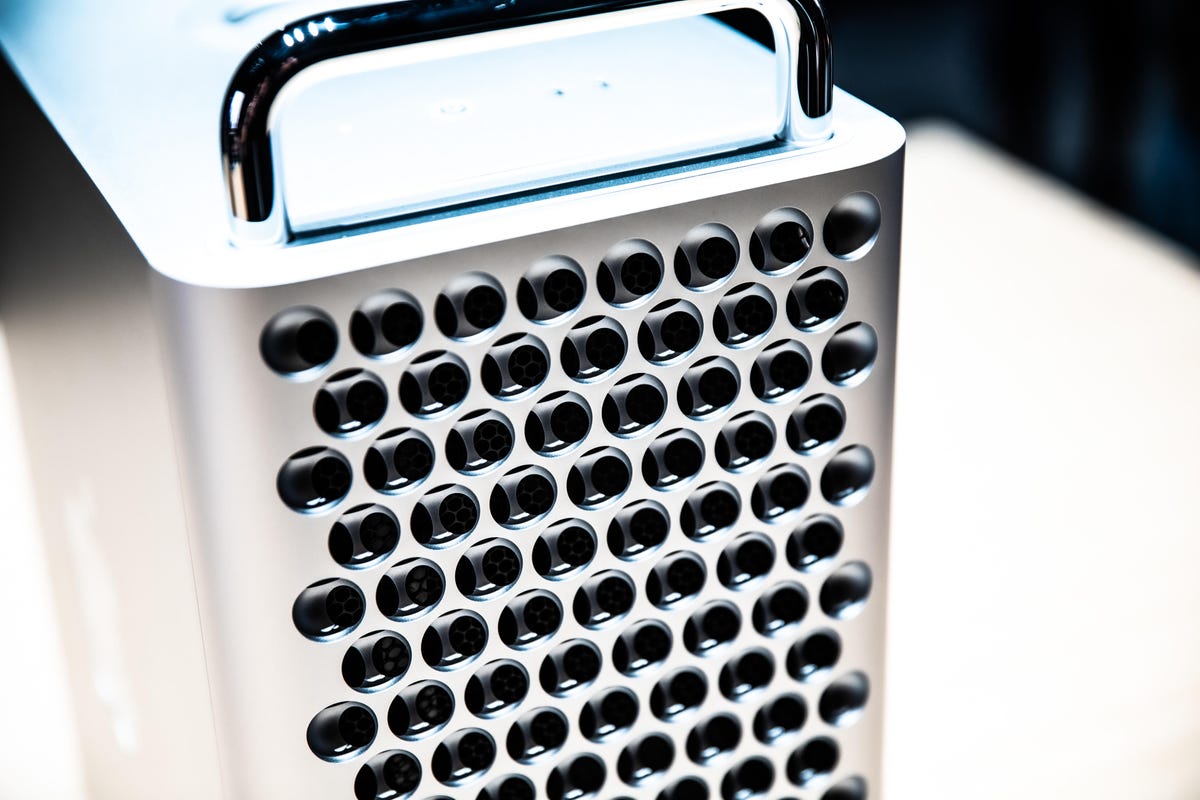
James Martin/CNET
While you’re paying a big premium for the Apple name, an iMac is generally a great option for Apple fans who want an all-in-one computer with a superior display. And now that the 24-inch iMac has gotten a nice overhaul, complete with the M1 chip, that’s a great starting point. And while the 27-inch iMac is no more, the new Mac Studio starts at $2,000, and offers some serious power, especially if you ramp up to the M1 Ultra chipset.
Need even more power? While Apple has a Mac Pro living at the top of its desktop line, the current model is an aging Intel design, which the company has already pledged to replace with an Apple Silicon version. If the Mac Studio can’t handle your high-end Apple needs, we’d strongly recommend steering clear of the Mac Pro until that new version hits.
Chromebox, Mini PCs and other niche options
When it comes to desktop PCs, towers and all-in-ones represent the vast majority of the market. There are alternatives, but in the 2020s, they generally represent increasingly narrow slices of that market.
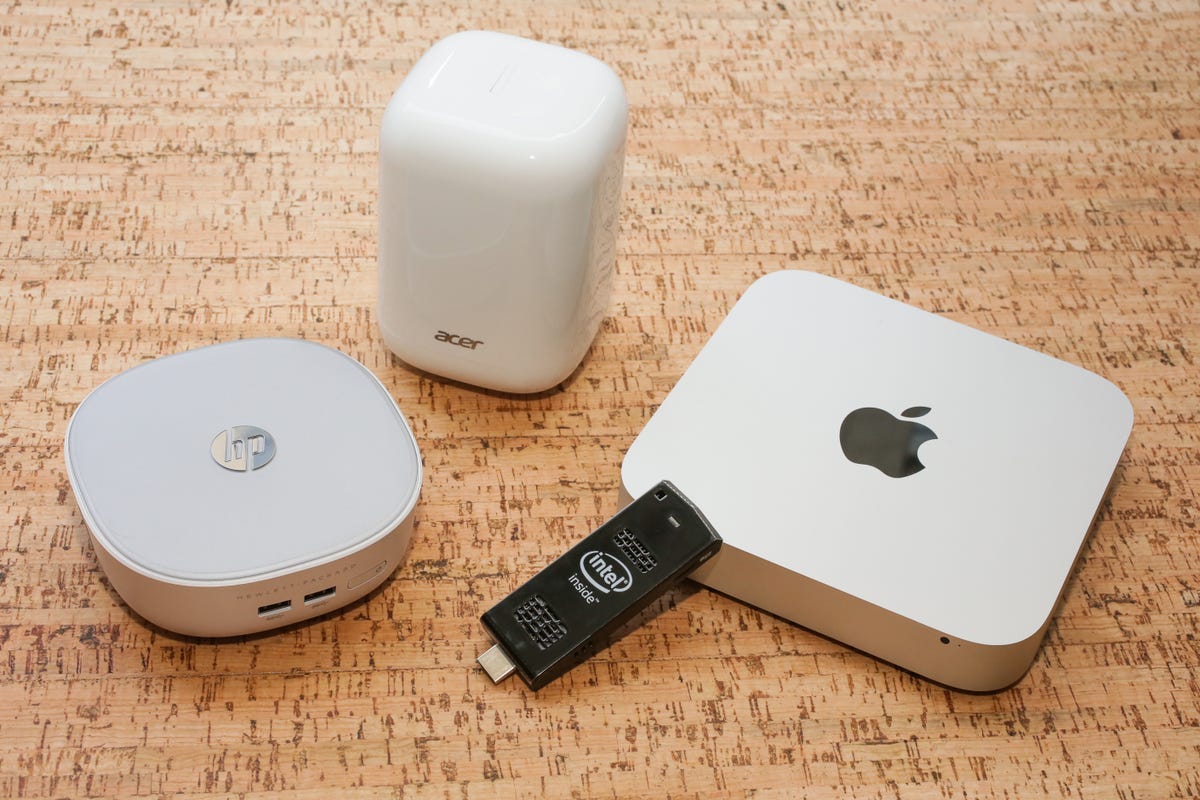
Left to right: The HP Mini, Acer Revo, Intel Compute Stick and Apple Mac Mini. The Mac is the only one that’s been recently updated.
Sarah Tew/CNET
Mini PCs: Following the debut of the Mac Mini in 2005, Windows PC makers experimented with similarly tiny designs. In the wake of likable small models like the Acer Revo One and HP Pavilion Mini, we even saw (woefully underpowered) “PC on a stick” offerings starting in 2015, but interest seems to have ebbed since then. Outside of specialty vendors like Beelink, the best choices in this mini PC size are probably the Intel NUC (Next Unit of Computing), most of which are sold as hobbyist options, requiring some BYO additions like user-supplied storage, RAM and other components — including the operating system. See more bare-bones Mini PCs at Newegg.
Chromeboxes: If you’re looking for very basic computing — browsing the web, email, social media, YouTube and the like — the Chrome operating system is the most affordable route for home computing. This Google operating system effectively is little more than the Chrome web browser. That makes it easy for multiple users (only a Gmail address is needed to log in), and — because there’s no heavy operating system beyond the browser — viruses aren’t really an issue. Colloquially known as “Chromeboxes” (versus a “Chromebook” laptop), these systems don’t have beefy CPUs, RAM or storage requirements. That said, if you need any software beyond browser-based web apps, or if you don’t have excellent broadband, you’ll want to stick with Windows or Mac options above. Now, before you spend any money, you should check out the free version of the operating system known as ChromeOS Flex, which you can install on most old PCs (including running it from an attached USB drive). But if that’s not an option and you want to buy new, expect to pay between $200 and $500 for a Chrome-based desktop. However, the closer you get to that $500 price point, the more you should consider stepping up to a Chromebook laptop or a basic Windows tower (see above) for just a bit more. See Chromebox options at Newegg.
Linux PCs: No, Windows, Mac and ChromeOS are not your only operating system options. There’s a wide world of Linux operating systems out there, many of which are effectively free. You can get PCs with Linux preinstalled, but the better, more affordable option is probably installing it (or dual-booting) on a used Windows PC. See Linux PC options at Newegg.
Raspberry Pi: You may have heard of a small computer that’s no bigger than a paperback book, and can be had for about $150. That’s the Raspberry Pi, and it’s 100% real and very cool — if you’re a hobbyist looking to build your own Lego-style computer and install your own custom Linux operating systems. We just wouldn’t recommend it as a primary computer if you’re looking to run mainstream software. See the Raspberry Pi 4 kit at Amazon.
The best laptops in every category
The review process for laptops, desktops, tablets and other computer-like devices consists of two parts: performance testing under controlled conditions in the CNET Labs and extensive hands-on use by our expert reviewers. This includes evaluating a device’s aesthetics, ergonomics and features. A final review verdict is a combination of both those objective and subjective judgments.
The list of benchmarking software we use changes over time as the devices we test evolve. The most important core tests we’re currently running on every compatible computer include: Primate Labs Geekbench 5, Cinebench R23, PCMark 10 and 3DMark Fire Strike Ultra.
A more detailed description of each benchmark and how we use it can be found in our How We Test Computers page.

